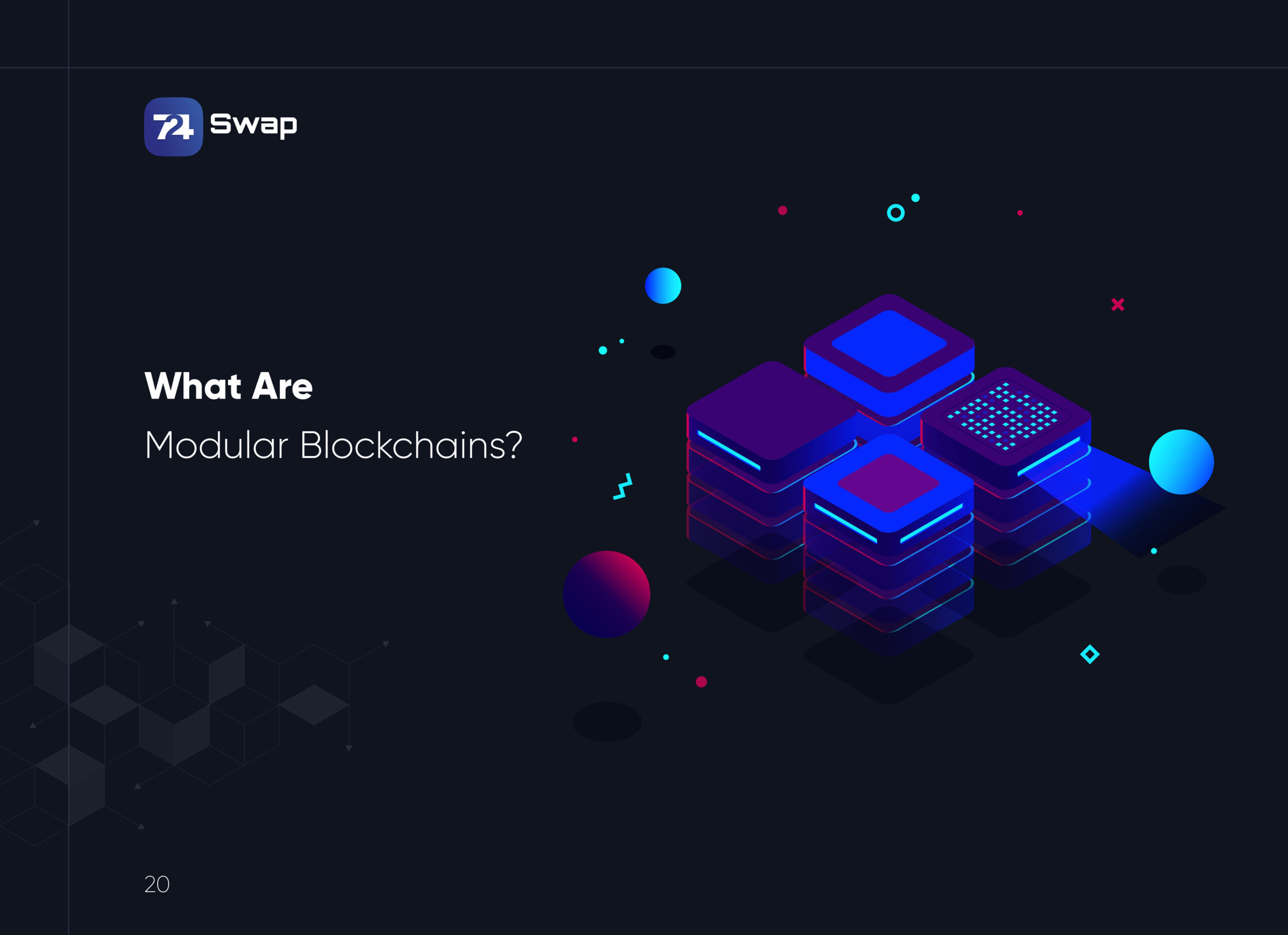What Are Modular Blockchains?
Introduction
Blockchain technology, since its inception with Bitcoin in 2008, has revolutionized various industries by providing a decentralized and secure way to record transactions. However, as the technology evolves, so do the demands for scalability, efficiency, and functionality. This has led to the development of modular blockchains, an innovative approach to building blockchain systems that promise to address many of the limitations inherent in traditional monolithic blockchains. This article delves into what modular blockchains are, their components, advantages, challenges, and future prospects.
Understanding Modular Blockchains
Modular blockchains break down the blockchain architecture into distinct, specialized modules. Unlike traditional monolithic blockchains where all functions are tightly integrated into a single layer, modular blockchains separate these functions into different layers or modules. Each module can be developed, optimized, and upgraded independently, allowing for greater flexibility and scalability.
Key Components of Modular Blockchains
- Execution Layer:
- This layer is responsible for processing and executing transactions. It includes smart contracts and virtual machines that run decentralized applications (dApps). By isolating the execution process, modular blockchains can optimize transaction processing and improve throughput.
- Consensus Layer:
- The consensus layer ensures that all nodes in the network agree on the state of the blockchain. It involves mechanisms like Proof of Work (PoW), Proof of Stake (PoS), or other consensus algorithms. Separating consensus from other functions allows for independent improvements and innovations in achieving network consensus.
- Data Availability Layer:
- This layer ensures that transaction data is available to the network. It stores and disseminates the data required for transaction validation and execution. By handling data availability separately, modular blockchains can achieve higher data throughput and resilience.
- Networking Layer:
- The networking layer manages communication between nodes in the blockchain. It ensures efficient and secure transmission of messages, blocks, and transaction data. A dedicated networking layer can be optimized for speed and reliability, enhancing overall network performance.
Advantages of Modular Blockchains
- Scalability:
- Modular blockchains can scale more efficiently than monolithic ones. By separating functions, each module can be scaled independently to meet the demands of the network. This approach can significantly increase transaction throughput and reduce bottlenecks.
- Flexibility:
- The modular approach allows for greater flexibility in blockchain design. Developers can choose or develop specific modules that best suit their needs. This can lead to more customized and efficient blockchain solutions tailored to various applications.
- Upgradeability:
- With modular blockchains, individual modules can be upgraded or replaced without disrupting the entire system. This makes it easier to implement improvements and adopt new technologies, ensuring that the blockchain remains up-to-date and secure.
- Specialization:
- Each module can be optimized for its specific function. For example, the execution layer can be fine-tuned for smart contract performance, while the consensus layer can focus on achieving robust and efficient agreement mechanisms. This specialization can lead to overall better performance and security.
Challenges of Modular Blockchains
- Complexity:
- While modular blockchains offer many advantages, they also introduce additional complexity in design and implementation. Coordinating and integrating multiple independent modules can be challenging, requiring sophisticated frameworks and protocols.
- Interoperability:
- Ensuring seamless interoperability between different modules is crucial. Modules need to communicate effectively and work together to maintain the integrity and functionality of the blockchain. This requires well-defined standards and protocols.
- Security:
- While modular blockchains can enhance security through specialized modules, they can also introduce new attack vectors. Each module must be rigorously tested and secured to prevent vulnerabilities that could compromise the entire system.
- Adoption and Transition:
- Transitioning from monolithic to modular blockchain architectures can be complex and resource-intensive. It requires a shift in development paradigms and may involve significant changes to existing infrastructure.
Examples of Modular Blockchain Projects
Several projects and platforms are exploring the modular blockchain approach. Notable examples include:
- Polkadot:
- Polkadot is a multi-chain network that enables different blockchains to interoperate. It uses a modular architecture where the relay chain handles consensus and interoperability, while parachains handle specific application logic and execution.
- Cosmos:
- Cosmos aims to create an “Internet of Blockchains” by enabling different blockchains to communicate and interact. It uses the Tendermint consensus protocol and the Cosmos SDK to build modular and interoperable blockchains.
- Ethereum 2.0:
- Ethereum 2.0, also known as Eth2 or Serenity, is an upgrade to the Ethereum network that introduces a modular architecture. It separates the execution layer (Ethereum Virtual Machine) from the consensus layer (Beacon Chain) to improve scalability and performance.
Future Prospects
The future of modular blockchains looks promising as the technology continues to mature and gain adoption. The modular approach aligns with the growing demand for more scalable, flexible, and efficient blockchain solutions. As research and development in this area progress, we can expect to see:
- Improved Standards and Protocols:
- Development of standardized protocols for module interoperability will enhance the robustness and ease of integration for modular blockchains.
- Increased Adoption:
- As modular blockchains demonstrate their advantages in real-world applications, more projects and enterprises are likely to adopt this architecture.
- Enhanced Security:
- Ongoing research into blockchain security will help address the unique challenges posed by modular architectures, making them more secure and resilient.
- Innovation in Consensus Mechanisms:
- With the separation of consensus from other blockchain functions, there will be greater scope for innovation in consensus mechanisms, leading to more efficient and sustainable blockchain networks.
Conclusion
Modular blockchains represent a significant evolution in blockchain technology, offering a more scalable, flexible, and upgradeable alternative to traditional monolithic blockchains. By breaking down the blockchain into specialized modules, this approach addresses many of the challenges faced by earlier blockchain systems. While there are still hurdles to overcome, the potential benefits of modular blockchains make them a compelling direction for the future of decentralized technologies. As the blockchain ecosystem continues to grow and diversify, modular blockchains are poised to play a crucial role in enabling the next generation of blockchain applications and solutions.
